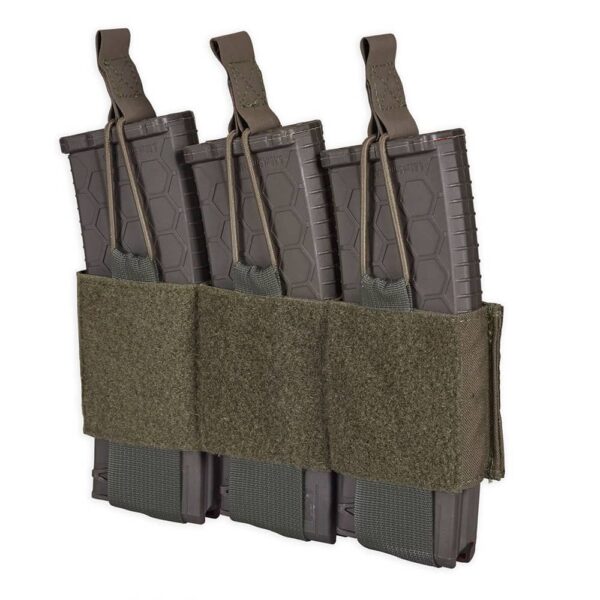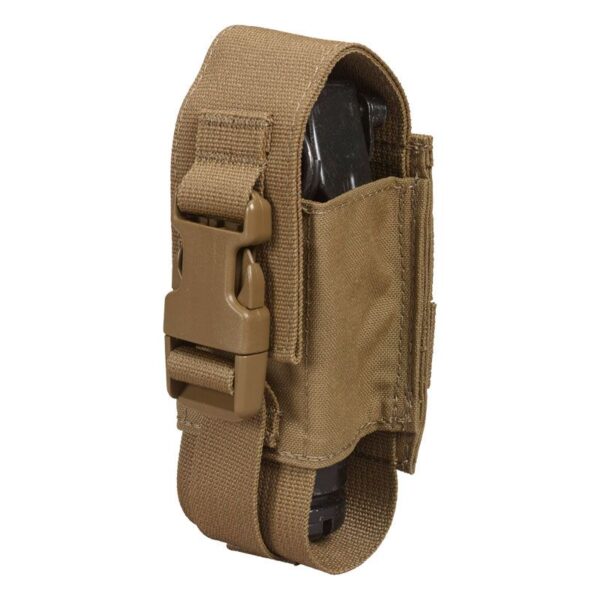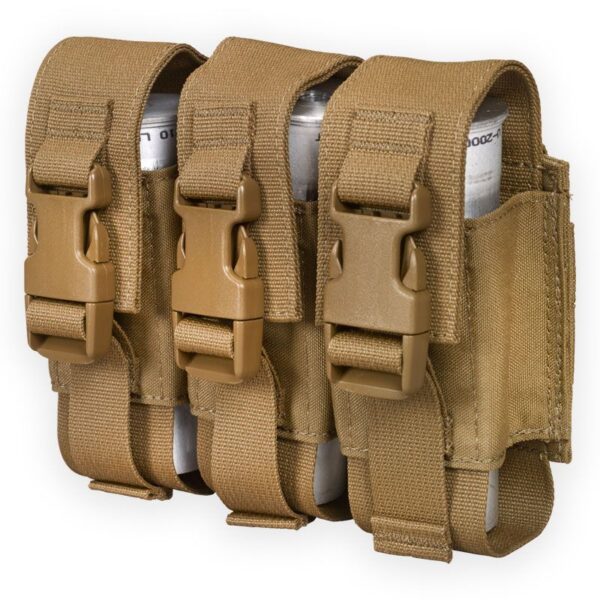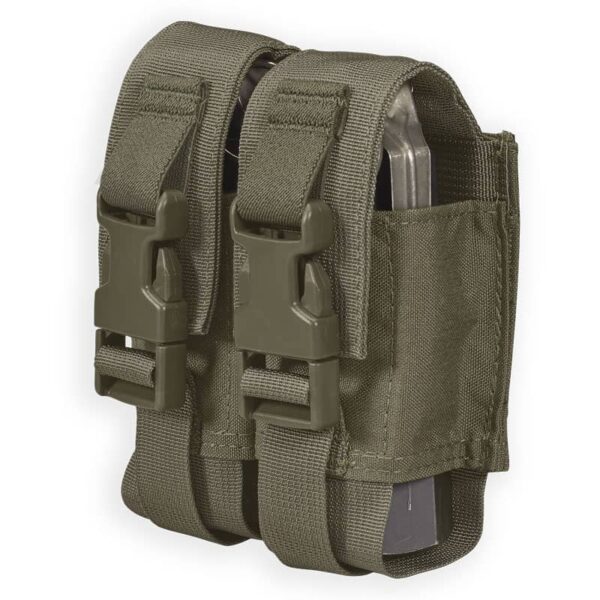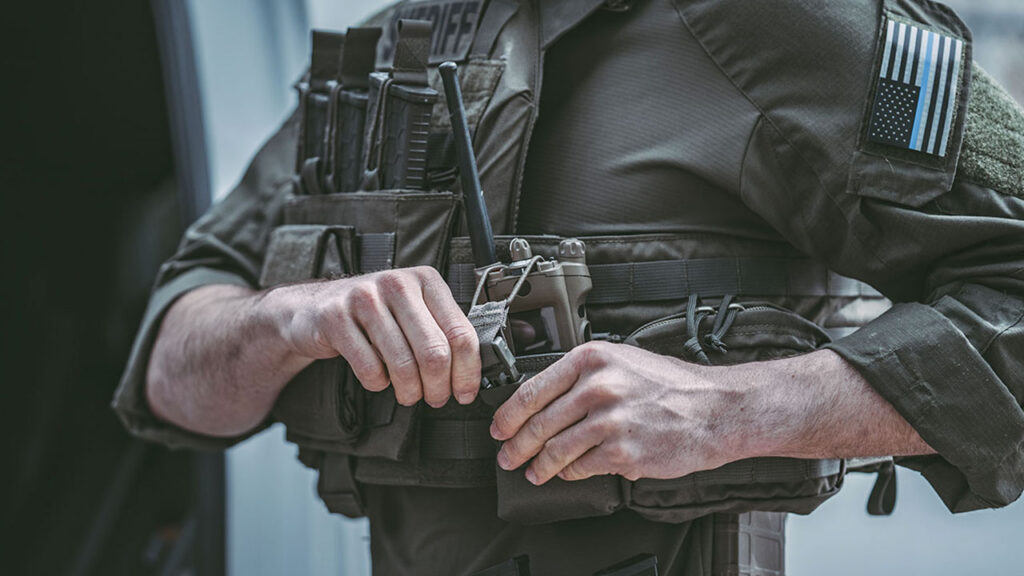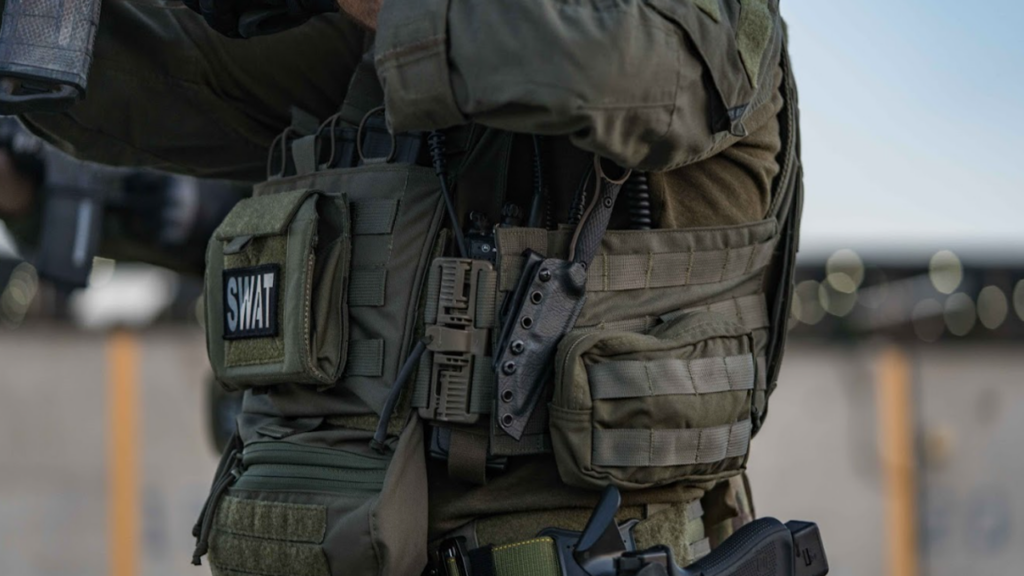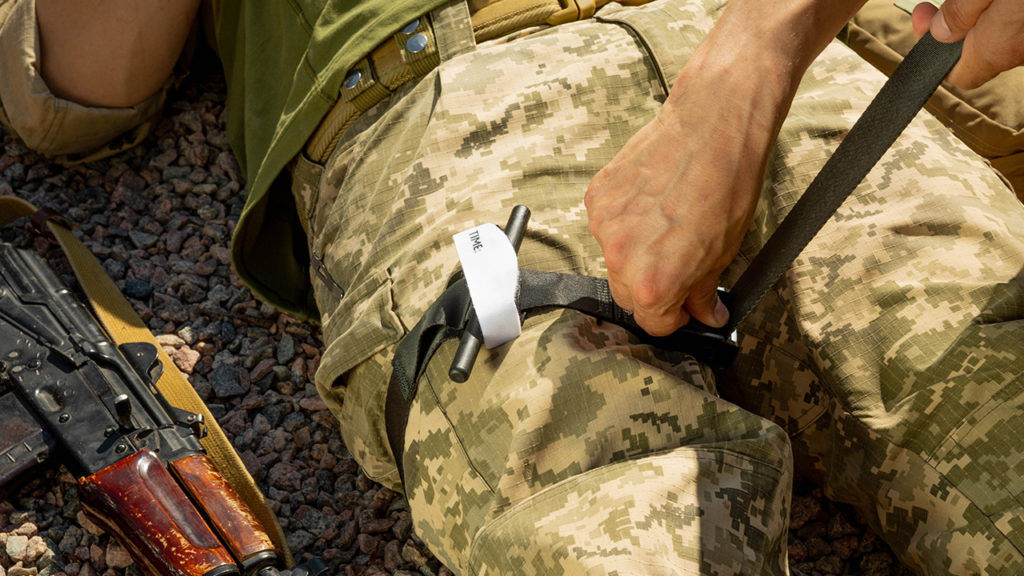Guide: How to Pick the Right Mag/Ammo Pouch
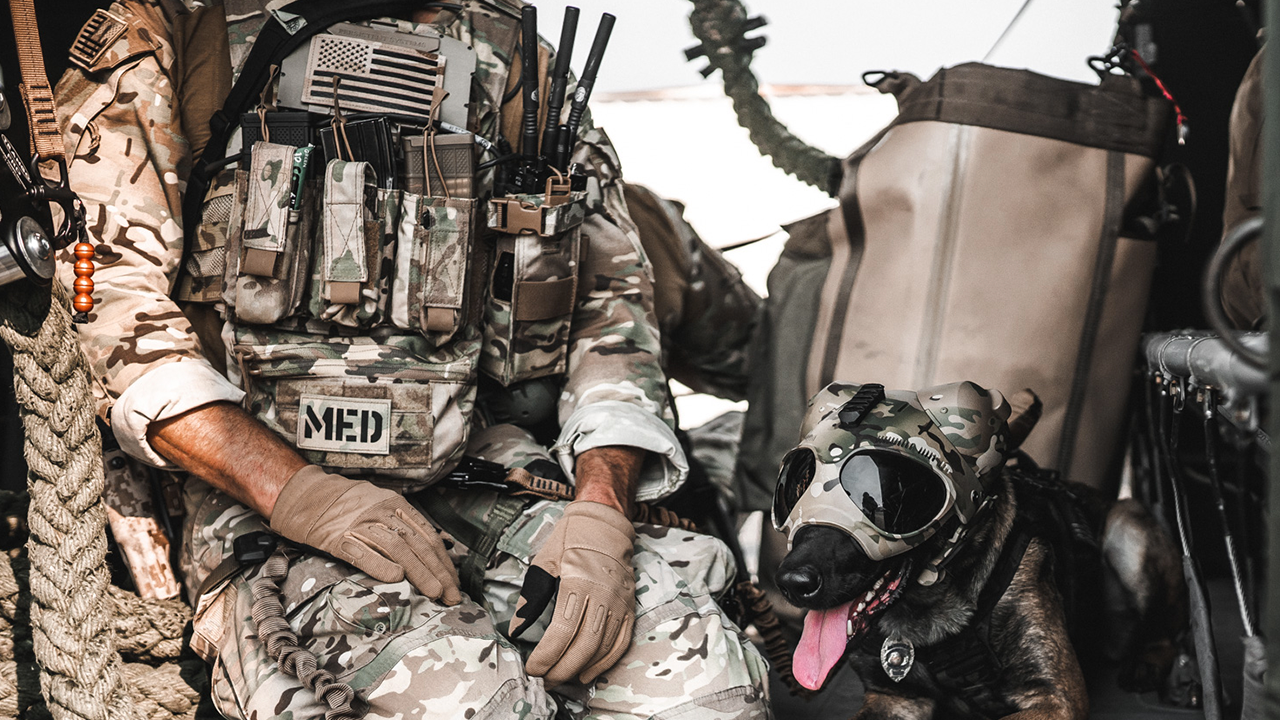
If you have a plate carrier vest, not only do you have a great piece of body armor, but you also have a versatile platform that you can deck out with different accessories.
One of the most useful attachments for a plate carrier is a mag pouch or also known as an ammo pouch. Mag pouches are designed just to hold your ammunition. They are the best resource for having your ammunition easily accessible.
If you go looking for mag pouches on sites such as Chase Tactical, you’ll see that we have a massive selection. It can be hard to figure out which type is better for you, so here is our guide to all the different mag pouches out there.
Table of Contents
What Makes One Mag Pouch Different from another?
There are as many magazine pouches out there as there are plate carriers, weapon types, and more. You can filter for different factors when you search for the right ammo pouch, for example, on Chase Tactical.
Magazine Pouch Shape And Easy Accessibility
Mag pouches are different from general pouches because they are shaped and sized specifically to hold ammunition. The design means that your ammunition fits in the pouch snugly and is easily accessible—you don’t have to root around looking for your ammunition.
Since the magazine pouch is supposed to hold your ammunition securely, it makes sense that you will need a different type of pouch depending on the ammunition you need for your weapon. A flashbang is different from a bullet, which is different from a grenade. You can get pouches that are tailored to different weapons, such as this mag pouch just for pistols.
Magazine Pouch Size
Another factor affecting which magazine pouches are best for you is the size. Think about how much ammunition you will need when you take your plate carrier and equipment out on a mission. Different pouches have slots for different amounts of ammunition.
You can get a pouch with enough space for a single mag if you’re trying to minimize the weight, you’re carrying on your plate carrier, or get a triple pouch if you know you’ll need a lot of ammunition without much time to search your gear and reload. Each loadout will vary on the mission or operational requirements.
Ammo Pouch Design
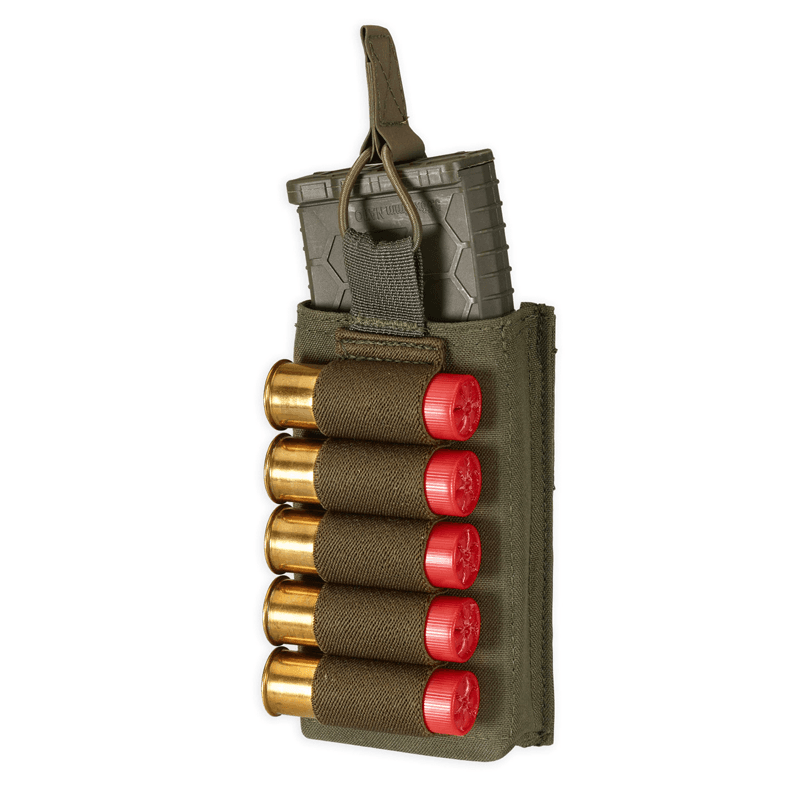
Chase Tactical Single 5.56mm + Shotgun Strip Mag Pouch
Lightweight 5.56mm + Shotgun Strip Magazine Pouch available in black, coyote tan, ranger green and multicam colors.
When we’re talking about the design of magazine pouches, we’re not discussing the appearance. Instead, we’re thinking about the practicality of the design features, which will be very important once you’re out in the field and you need to retrieve a magazine quickly.
For example, most mag pouches come with either an open or a closed top. Closed-top pouches have a flap, often secured with hook and loop technology, that folds over the magazines inside.
This prevents moisture and debris from getting into your ammunition. However, open-top pouches make it a lot faster to access your ammunition, and in the field, split seconds do matter.
Another important design factor that you should consider when buying a magazine pouch is if it is an open or concealed carry pouch. While open-carry pouches offer easy access, concealed-carry pouches are more discreet.
If you are not a law enforcement officer, this will depend on the laws around carrying weapons in your state.
Types Of Ammo Pouches
Here is the variety of the ammo and mag pouches you'll find:
Tactical Ammo Pouches: For combat use with rapid access to ammunition, sometimes with quick-release mechanisms and loops for other equipment.
Magazine Pouches for Assault Rifles: Storage pouches for assault rifle magazines frequently include an organizer to keep things in position.
Modular Pouches: Adjustable pouches mount to various configurations, providing versatility and sometimes loops for tool carrying.
Dump Pouches: Keep previously used magazines that have quick-release functionality for accessibility and loops for added accessories.
Double/Triple Mag Pouches: Triple or double mag pouches hold two or three mags simultaneously and are made with efficiency in shooting sports or fight sports in mind.
Pistol Mag Pouches: Fold-up pouches for pistol mag use have adaptable features and assorted price and look choices.
Hydration & Utility Pouches: General-purpose water or tool pouches collection with ammo and tool compartments.
Chest Rig Pouches: Pouches built into a chest rig for quick and secure ammo access, plus extra tool loops.
Belt Pouches: These are suitable for those preferring to experience old-school carrying. They are easy to access and usually incorporate quick-release mechanisms.
Load-Bearing Vest Pouches: Vest-attached pouches are suitable for quickly storing ammo, tools, and assault environments.
What is the Best Material for an Ammo Pouch?
Another important factor in determining which mag pouch to buy is the material—it’s so important that we’re dedicating a separate section to it. Ammo pouches usually come in one of three materials: leather, composites, and nylon.
Leather
Leather is the oldest material for magazine pouches and other weapons accessories such as holsters. It is definitely the most attractive. Who doesn’t want to put on a supple leather pouch and pretend he is a cowboy or a soldier of yore?
However, leather is by far the most expensive material for ammo pouches. It is also one of the least practical because it doesn’t attach easily to plate carriers. If you’re into historical reenactment or want a pouch for show, get a leather one; otherwise, don’t bother.
Composites
Thermoplastic composites such as Kydex are becoming more and more popular for pouches, holsters, and other firearm accessories. The main reason for the popularity is that thermoplastics are extremely durable.
Composite ammo pouches and holsters are used often by law enforcement due to their rigidity and strength. If you are a civilian, they might be a bit too bulky to wear comfortably—and with such a material, it will feel like silly overkill. Still, this is a good option to have.
Nylon
Nylon is the best option for mag pouches. It is extremely affordable, making it efficient for law enforcement departments buying in bulk and for the average civilian. It is lightweight and breathable, so it doesn’t add too much weight to an already bulky plate carrier. You don’t sacrifice anything in durability, either.
Plus, nylon mag pouches are MOLLE compatible and come with several different fastening options, including bungee cord, hook and loop technology.. For example, the Single Kangaroo 5.56+ Pistol Mag Pouch from Chase Tactical uses both bungee retention and hook-and-loop technology for its different compartments.
Nylon is more versatile than the other materials, so manufacturers can create multiple compartments, utilize various attachment technologies, and even allow you to adjust the pouches by size.
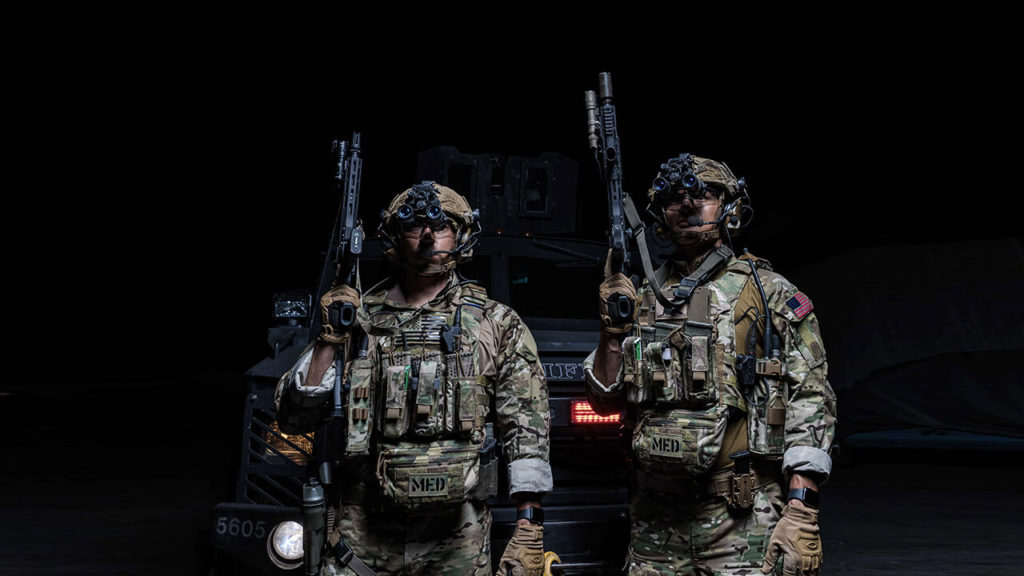
How To Choose The Best Mag/Ammo Pouch
When it comes to tactical gear, the right magazine, mag, ammunition, ammo, and pouch often makes all the difference between efficiency, ease of access, and overall performance. A mag pouch isn't considered an accessory if you build a range, duty, or personal defense setting. It's the foundation of your loadout. This guide explains how to choose the proper mag or ammo pouch for your specific needs, coding down the key factors of capacity, compatibility, and design.
1. Define Your Use Case
Before considering options, you need to decide what kind of use case you are. Are you a casual, everyday carry guy with a pistol pouch on your duty belt, or do you need to stack magazines for an M4 or M16 to have a decent number of rounds for longer, more intense engagements? Your use case determines the kind of pouch you need, from shotgun shell holders to rifle mag pouches for high-speed reloads.
2. Type of Firearm Consideration
Different firearms require different magazine pouches. For example:
Pistol pouches: They are specifically designed for smaller magazines, fitting neatly on duty belts and vests and allowing quick access to your spare mags. You will find pistol pouches in every size and style to accommodate 9mm or .45 magazines.
Rifle Mag Pouches: Ideal for M4 or M16-style platforms, they often hold higher-capacity mags like 30-rounds. Ensure that your mag pouch can hold the capacity and size of the rifle magazines you will use.
Shotgun Shell Holders: When carrying a shotgun, a pouch may be needed to store loose shells or shotgun shell cases and make reloading easier.
3. Material and Durability
Your environment and activity level should also guide your choice. Look for pouches made from durable materials such as Cordura nylon ammo pouches, which are resistant to tears, water, and general wear. In scenarios demanding high speeds, you need rugged construction to withstand rough handling, while others will prefer olive-drab pouches that camouflage into the environment for tactical purposes.
4. Storage and Capacity
Another important consideration when choosing a mag or ammo pouch is capacity. A good right pouch should conveniently hold the number of rounds you might need and not be too bulky or heavy. Consider whether a double-stack mag holder would work well for you or if you can make do with a single-stack. On rifle mags, some pouches are fitted to hold two mags (stacked mags), and others just take one, but there's better retention. Balance comfort with mobility while considering your storage needs.
5. Attachment Compatibility: PALS, MOLLE, and More
You've got your mag pouch, but how you attach it to your gear is as important as the pouch itself. You may be looking for a vest, a duty belt, or a backpack that securely attaches the pouch via PALS or MOLLE webbing. These systems allow you to customize your gear's layout so your pouches stay in place during movement.
6. Ease of Access and Retention
You would want ready access to your mags but also need good retention so they don't bounce around. Most pouches have some form of locking with straps, clips, or flaps. Some higher-speed units use elastic retention for speed but must balance access with mags staying in place.
7. Cost and Value
With so many options, shopping for mag pouches can be overwhelming. But it does get easier when you know your way around online stores - look for something sorted a-z alphabetically or from Z-A price through the browser feature. Don't forget your budget, but don't compromise on quality; a mag pouch is an investment towards your performance and safety, so you must balance cost and functionality.
8. Extra Features
You can look for pouches with extra features, depending on your needs. Some of them have patches for personalization, and others offer extra compartments - for example, to hold more than just magazines, such as a small first aid kit or multi-tool. You can even wear apparel with integrated mag holders for super-light packing.
Choosing Your Ammo and Mag Pouches
When you’re shopping for plate carrier accessories, don’t forget about pouches to keep your ammunition. As you browse the pretty massive selection of pouches out there, don’t forget to think about your ammunition type, pouch size, and material (we recommend nylon). If this guide helped you, let us know and share it with a friend.
Frequently Asked Questions
What is the best mag pouch size for me?
Check the type of magazine your firearm uses. For instance, M4 and M16 magazines are usually thirty rounds, while pistol magazine length varies depending on caliber and capacity. Ensure your pouch is designed to fit your specifications on magazine dimensions.
What's the difference between PALS and MOLLE?
PALS refers to the webbing grid found on most tactical gear, while MOLLE refers to the attachment system incorporating PALS webbing. Although both are compatible with a wide range of pouches and accessories, it is impossible to directly attach a mag pouch to a regular belt.
Which is best: flap or open-top design?
Open-top designs are preferable when retention and speed of accessing magazines are low priority. An open-top design gives quicker access, as you can just grab onto a magazine without the cover flap getting in the way. Flaps, on the other hand, give better retention and protection for your magazines.

